|
September 7th, 2011
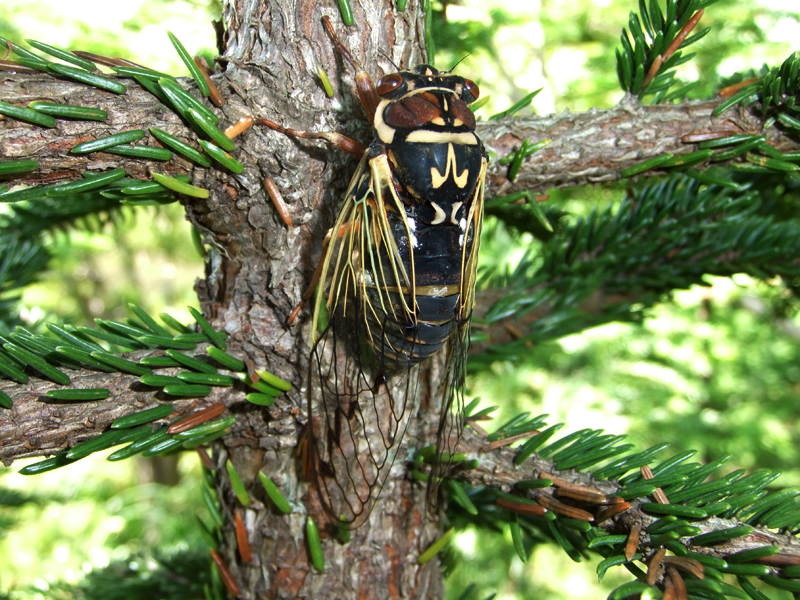
紫陽花とコエゾゼミ
二十日盆のあと、お寺の境内でみられる紫陽花。
島人はいつもは秋が来るというが、
最近は残暑を感じさせるコエゾゼミの鳴きが響くようになってきた。
Ajisai [ hydrangea aspera ] [and ko-ezo semi [ terpnosia nigricosta ]
After the 20th day of O-bon we often see hydrangeas in the temple yard [compound]. Islanders say that autumn is coming. Lately, however, the sound of ko-ezo semi [cicada] makes us think that it is Indian Summer.
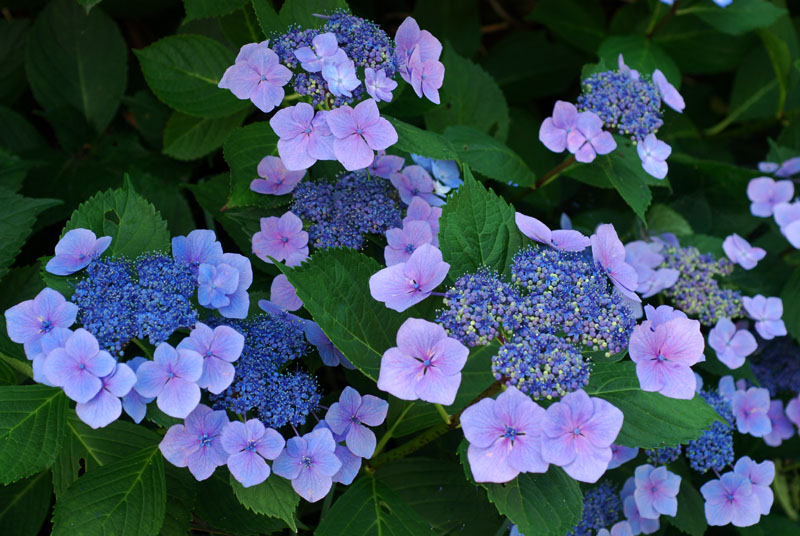
Photos by Eiji Nishiya, August 2011
Posted in FOM Japan, Gates Ajar, Home | Comments Off on Indian Summer on Rishiri
July 27th, 2011
ハシブトガラス
めったに撮ることの出来ないハシブトガラス。
動きに敏感で、出来るだけ近づこうとしても、直ぐに飛んでしまう。
今回は珍しく、じっと動かないでいてくれた。
一羽でヤマグワの実などを食べていたので、私が離れるのを待っていたのだろうか。
愛嬌のある顔であると感じたが、敏感で人を襲うカラスとは思えなかった。
It is very unusual to see the HASHIBUTO GARASU [Corvus macrorhynchos]; she is very sensitive and cautious and flies away if you try to get close. This time, however, she stood still for my photo – which is a rare occurrence. Alone, she was eating the fruit of the YAMAGUWA tree, and paused, as if she were waiting for me to leave so she could continue with her feast. Her expression was so innocent and charming – it’s difficult to imagine that she will attack humans.
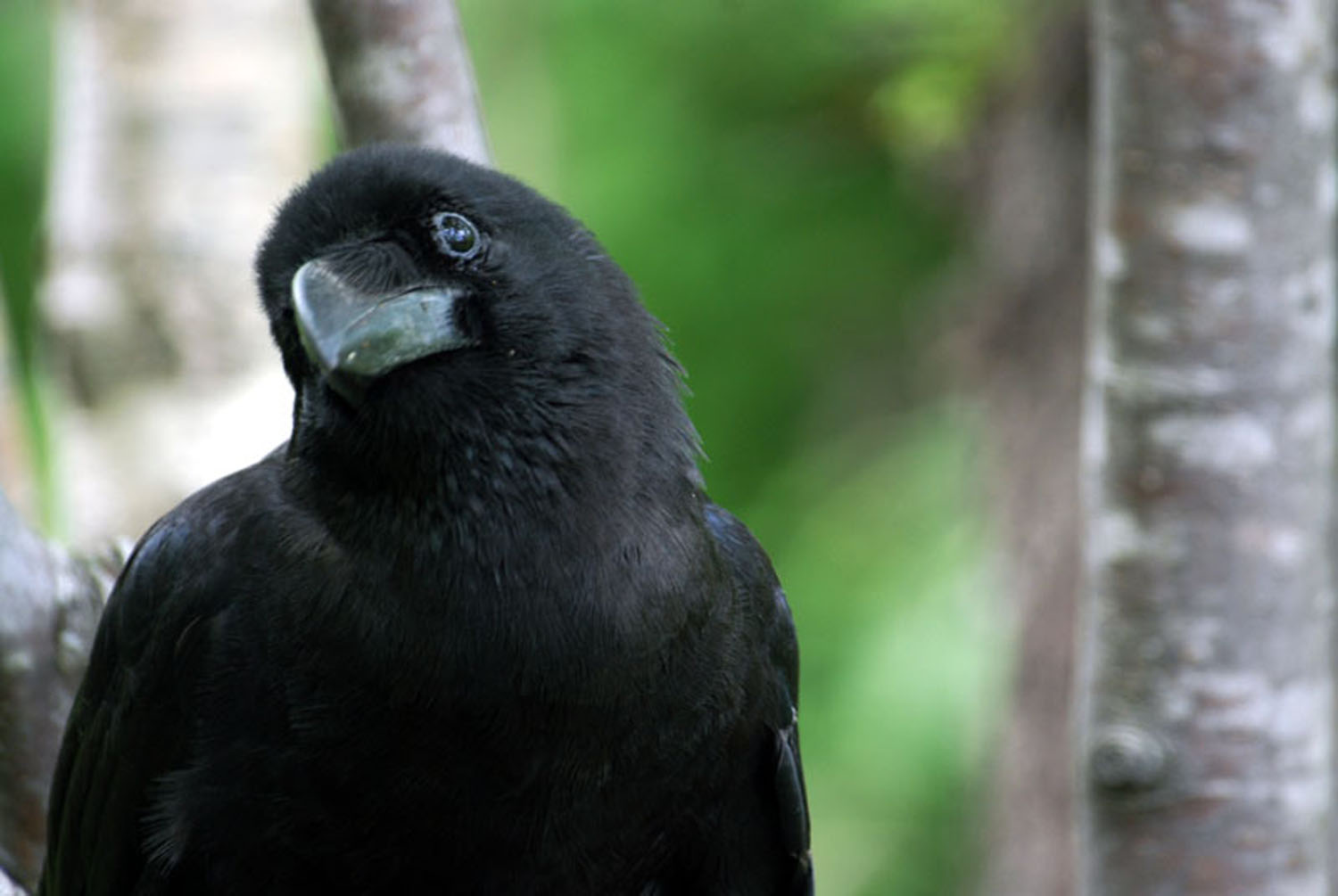 photo by Eiji Nishiya photo by Eiji Nishiya
The YAMAGUWA [Morus bombycis] or wild mountain mulberry has a prehistoric connection to humans. The use of mulberries has a long history in Japan, traceable to Jomon times. The fruit can be eaten or made into wine. The tree flowers in April to June with leaves; false fruits ripen from red to black in June to July. This mulberry is one of the most-common trees in Japan and is cultivated for feeding silkworms. The wood, hard and heavy, is used for furniture, cabinet work, inlaid works, and sculptures.
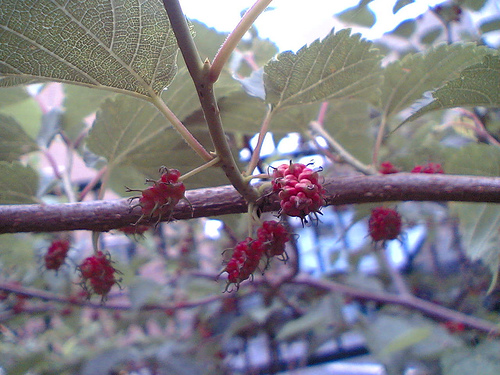
Posted in FOM Japan, Gates Ajar, Home | Comments Off on Summer on Rishiri Island
July 20th, 2011
Our people’s position at the mouth of the Columbia River and nearby Willapa Bay afforded us access to some of the richest arrays of resources on this continent. Waterways provided a network of trade routes that spread, like a spider web, hundreds of miles along the coast, and inland to Puget Sound, Hood Canal, the Chehalis River, and even onto the plains. The combination of these two factors culminated in a trading society unrivaled in the western half of the continent.
Semi-subterranean longhouses provided refuge from the endless rain and wind of winter, some large enough to house over a hundred people. Larger villages contained twenty or more longhouses of varying sizes. Inside these comfortable houses, the winter dances, songs and stories were told as the fires cracked and cast their long shadows. Some longhouses were temporarily abandoned for the summer fishing camps; others were occupied year round. the endless rain and wind of winter, some large enough to house over a hundred people. Larger villages contained twenty or more longhouses of varying sizes. Inside these comfortable houses, the winter dances, songs and stories were told as the fires cracked and cast their long shadows. Some longhouses were temporarily abandoned for the summer fishing camps; others were occupied year round.
Five types of salmon returned to the Columbia River and Willapa Bay in numbers unimaginable today. Indeed, they were the heaviest runs of salmon on earth. Smelt, sturgeon, suckers, several species of trout, whitefish, eels and other fish rounded out the wealth. The beaches offered an abundance of clams, mussels, oysters and the occasional stranded whale. Offshore were sea lions, harbor seals (olxayu), sea otters, and waterfowl by the millions. The forests were rich in elk, deer (Nawich), bear, beaver, river otter (nanANuks) and small game. Wapato (wapatu) abounded upriver, and the local plains turned purple with the flowering of the Camas (lakaNAs). Cattails, Rush, Sweet Grass Sedge, Nettle, Salmon Berry, Salal, Lilly bulbs and ferns were just a sprinkling of the plant resources. What was unavailable locally was obtained through our extensive trade network.
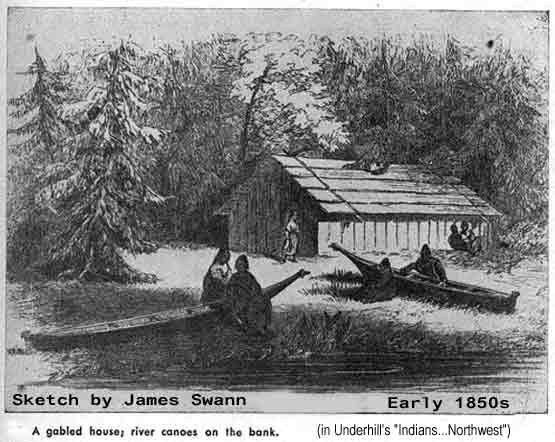 We were highly acclaimed canoeists, skillfully navigating the treacherous Columbia River and bar to the amazement of the traders and explorers. We plied the coastal waters from California to Alaska in canoes (kaniN) twenty-one to forty-two feet long and larger, carved from a single Red Cedar log and propelled by our distinctly notched, crescent-shaped paddles (isik) of Oregon Ash. It was this skill of travel, which transformed us into a tribe of tremendous wealth and power. We were highly acclaimed canoeists, skillfully navigating the treacherous Columbia River and bar to the amazement of the traders and explorers. We plied the coastal waters from California to Alaska in canoes (kaniN) twenty-one to forty-two feet long and larger, carved from a single Red Cedar log and propelled by our distinctly notched, crescent-shaped paddles (isik) of Oregon Ash. It was this skill of travel, which transformed us into a tribe of tremendous wealth and power.
Chinook life has always been dictated by a strict and complex system of taboos and ritual. Failure to follow ritual procedure might doom the individual, and/or the tribe, to bad luck, sickness or death. The rules and ritual formula could vary not only according to species, such as salmon, but might also vary according to location. For example, stranded whales (ikoli) are to be processed with extreme care, with strict accordance to guidelines, lest future whales drift away.
The myths and stories are steeped in the regiment of rules, and quintic references. The number five (qwinfN) is integral to Chinuk culture and appears repeatedly in the old stories and legends (ikanuN). From the five cold wind brothers, to the five salmon brothers, qwinfN is undoubtedly the most important Chinook number. The origins of its significance are obscure, although theories exist. One theory refers to the five directions. My personal, and totally unsubstantiated, theory is that it relates to the five salmon (qwAnat) species that run on the Columbia. Regardless of its origin, its power continues today. If you wish something to happen, repeat it five times. If you don’t want something to happen, well, repeating it five times would be a bad idea.
Trade goods were diverse, with slaves (ilaytix) and Dentalium (alIkHochick) being two of the most important items. Though most slaves were acquired through other tribes, the Chinook occasionally conducted slave raids of their own. Dentalium was the hard, claw-shaped shell harvested off the shores of Vancouver Island, usually by the Nootkan people. Dentalium was the money of its day, and many items were valued in comparison to fathom length strings (iLana) of the valuable shell. Other important trade items included powdered salmon from upriver, canoes, the double elk-skin clamons (armor), cakes of dried Salal berries, Mountain Goat horn and even dried Buffalo (duyha) from the plains. Obviously, with the exposure to such a diverse pool of skill and materials, the Chinook people were able to capitalize on a tremendous amount of knowledge and expertise.
[I consider cultural education to be of the utmost importance. Share what you learn with your children and relations. Learn the stories and songs, pass the legacy on, and the circle will continue. The rumors of our extinction have been greatly exaggerated. Hayu masi, “many thanks.”]
~~~ Greg Robinson, Volume I, 1st Edition
http://www.chinooknation.org
Posted in Gates Ajar, Home | Comments Off on Chinook Life Articles by Greg A. Robinson
June 26th, 2011
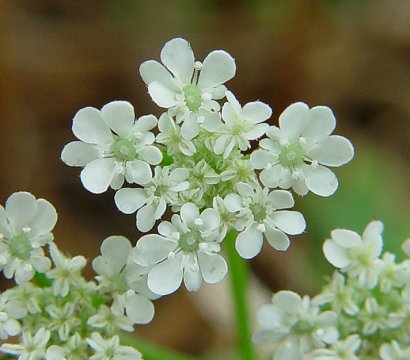
島に咲く花たち
いろんな花たちが咲き始めている。
島をまわる道路際には、シャク、エゾカンゾウ、チシマフウロがなど見られる。
のびてきている緑色の草の中に、群生している花たちを見つけて歩くことが楽しい。
海岸草原にはオレンジ色の花、エゾカンゾウが群生しています。
自然の花園の彩りは、いつも心を癒してくれます。
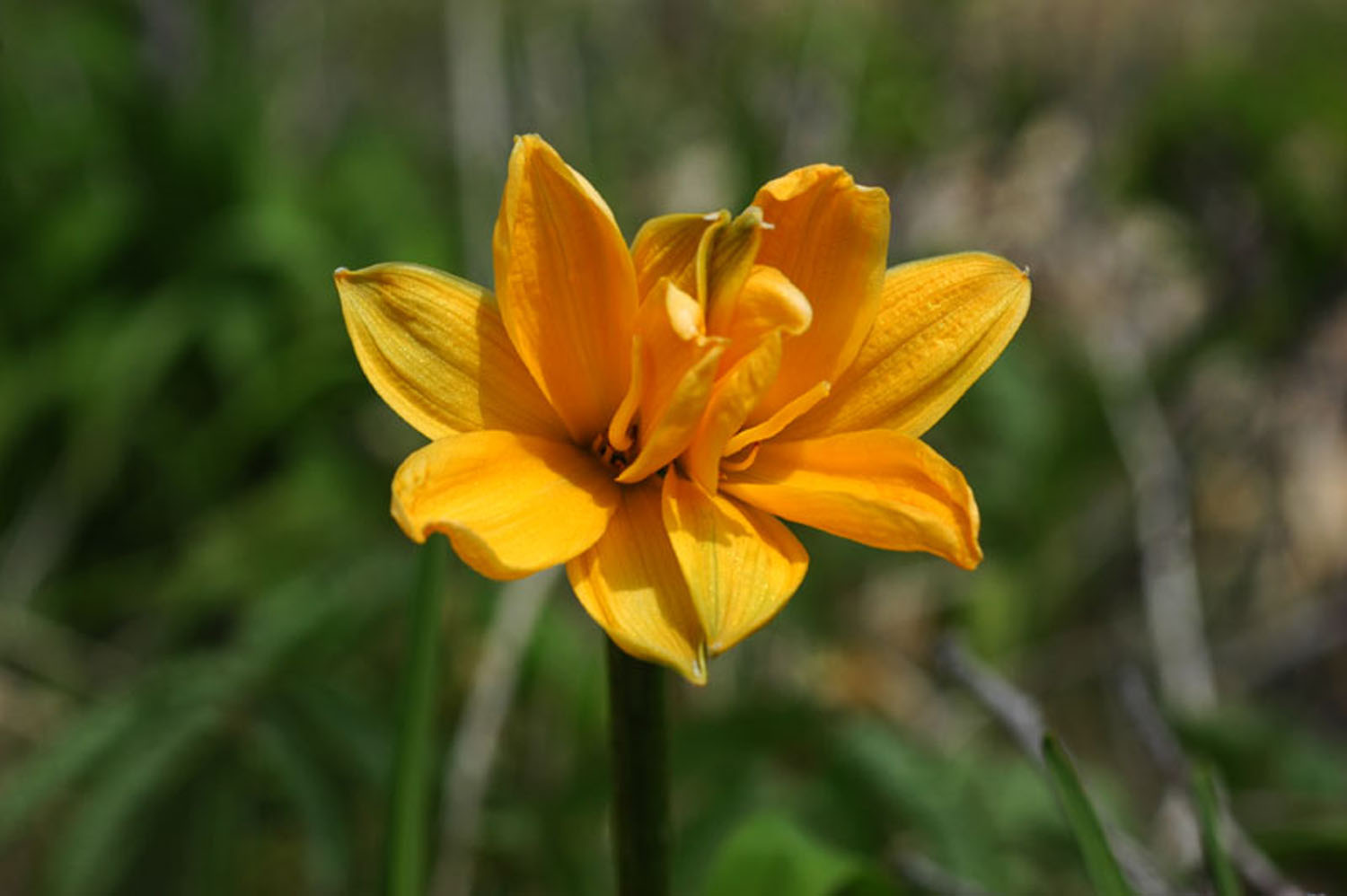
Pure white Wild Carrot (torilis japonicus) and bright orange Ezo-kanzou [Day Lily] grow in colonies in the meadows along the coast. The natural colors of the flowers always warm our hearts.
~~~ photos by Eiji Nishiya ~~~
Posted in FOM Japan, Gates Ajar, Home | Comments Off on Early Summer on Rishirito
June 26th, 2011
To help us appreciate the First Peoples of the Columbia River Basin …
(Chinook, from Tsinúk, their Chehalis name). The best-known ‘tribe’ of the Chinookan family claimed the territory on the north side of the Columbia River from its mouth to Grays Bay, a distance of about 15 miles, and north along the seacoast as far as the north part of Shoal-water bay, where they were met by the Chehalis, a Salish tribe. The Chinook were first described by Lewis and Clark, who visited them in 1805, though they had been known to traders for at least 12 years previously(1) ~
“… This Chin nook Nation is about 400 Souls inhabid the Countrey on the Small rivrs which run into the bay below us and on the Ponds to the N W of us, live principally on fish and roots, they are well armed with fusees and Sometimes kill Elk Deer and fowl. our hunters killed to day 3 Deer, 4 brant and 2 Ducks, and inform me they Saw Some Elk Sign. I directed all the men who wished to See more of the main Ocian to prepare themselves to Set out with me early on tomorrow morning. The principal Chief of the Chinnooks & his familey came up to See us this evening …” [Clark, November 17, 1805] “… found maney of the Chin nooks with Capt. Lewis of whome there was 2 Cheifs Com com mo ly & Chil-lar-la-wil to whome we gave Medals and to one a flag. …” [ Wm. Clark, November 20, 1805 ]
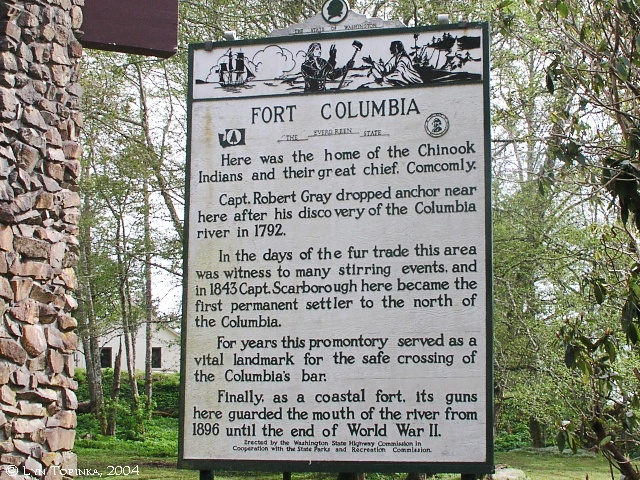
Com’comly, grandfather of Ranald and the principle Chinook Chief of the time, received the Lewis and Clark expedition hospitably when it emerged at the mouth of Columbia River in 1805, and when, in 1810, the J.J. Astor Expedition arrived to take possession of the region for the United States, Com’comly cultivated a close friendship with the pioneers, even giving his daughter [Ilchee] as wife to Duncan McDougal, a Canadian fur trader who was at their head and who took part in the founding of Ft. Astoria in 1811.
Yet Com’comly may have been an accomplice in a plot to massacre the garrison and seize the stores. When a British ship arrived in 1812 to capture the fort at Astoria, Com’comly, with 800 warriors at his back, offered to fight the’ enemy’. The American agents, however, had already made a peaceful transfer by bargain and sale, and gifts and promises from the new owners [the North West Company] immediately made Com’comly their friend.(2) Writing in Aug., 1844, Father De Smet(3) states that in the days of his glory Com’comly, on his visits to Vancouver, would be preceded by 300 slaves, “and he used to carpet the ground that he had to traverse, from the main entrance of the fort to the governor’s door – several hundred feet – with beaver and otter skins.”(4)
The Chinookan nation was one of the most powerful native groups in Oregon. It included those tribes formerly living on the Columbia River, from The Dalles to its mouth (except a small strip occupied by the Athapascan Tlstskanai), and on the lower Willamette as far as the present site of Oregon City, Oregon. The family also extended a short distance along the coast on each side of the mouth of the Columbia, from Shoalwater bay on the North. to Tillamook Head on the South.
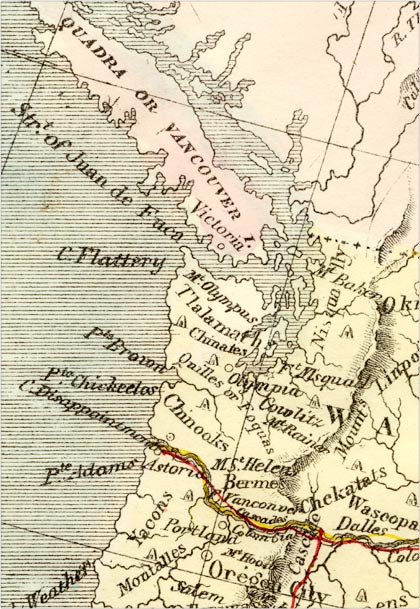
The region occupied by Chinookan tribes seems to have been well populated in early times. Lewis and Clark estimated the total number at somewhat more than 16,000. In 1829, however, there occurred an epidemic of unknown nature, which, in a single summer, destroyed four-fifths of the entire native population. Whole villages disappeared, and others were so reduced that they were, in some cases, absorbed into other villages. It can be assumed that it was the result of contact with a “white man’s” disease for which they had no immunity. The epidemic was most disastrous below the Cascades. In 1846 Hale estimated the number below the Cascades at 500, and between the Cascades and The Dalles at 800. By 1854 Gibbs gave the population of the former region as 120 and of the latter as 236. They were scattered along the river in several bands, all more or less mixed with neighboring stocks. In 1885 Powell estimated the total number at from 500-600, for the most part living on Warm Springs, Yakima, and Grande Ronde reservations in Oregon.
Most of the original Chinookan bands had no special tribal names, being designated simply as “those living at (place name)” This fact, especially after the epidemic of 1829, made it impossible to identify all the tribes and villages mentioned by early writers. Their language served as the basis for the Chinook Jargon which became the principal means of communication for the Indians from California to the Yukon, as well as trappers, traders and the majority of other individuals living and surviving in the territory.(5)
Posted in Uncategorized | Comments Off on Ranald MacDonald’s World – Chief Com’comly and the Tsinuk of the Lower Columbia
June 26th, 2011
On July 20, 1811, Duncan McDougal, Chief Factor for the Pacific Fur Company at Astoria, Oregon, and Ilchee, daughter of Chief Comcomly of the Chinook Tribe, married, becoming the first couple to be married in Astoria.
Washington Irving in his narrative Astoria (published in 1836) tells the tale:
“… M’Dougal, who appears to have been a man of a thousand projects, and of great, though somewhat irregular ambition, suddenly conceived the idea of seeking the hand of one of the native princesses, a daughter of the one-eyed potentate Com’comly, who held sway over the fishing tribe of the Chinooks, and had long supplied the factory with smelts and sturgeons. Some accounts give rather a romantic origin to this affair, tracing it to the stormy night when M’Dougal, in the course of an exploring expedition, was driven by stress of the weather to seek shelter in the royal abode of Com’comly. Then and there he was first struck with the charms of the piscatory (sic) princess, as she exerted herself to entertain her father’s guest.
The “Journal of Astoria,” however, which was kept under his own eye, records this union as a high state alliance, and great stroke of policy. The factory had to depend, in a great measure, on the Chinooks for provisions. They were at present friendly, but it was to be feared they would prove otherwise, should they discover the weakness and the exigencies of the post, and the intention to leave the country. This alliance, therefore, would infallibly rivet Com’comly to the interests of the Astorians, and with him the powerful tribe of the Chinooks. Be this as it may, and it is hard to fathom the real policy of governors and princes, M’Dougal dispatched two of the clerks as ambassadors extraordinary, to wait upon the one-eyed chieftain, and make overtures for the hand of his daughter.

The Chinooks, though not a very refined nation, have notions of matrimonial arrangements that would not disgrace the most refined sticklers for settlements and pin-money. The suitor repairs not to the bower of his mistress, but to her father’s lodge, and throws down a present at his feet. His wishes are then disclosed by some discreet friend employed by him for that purpose. If the suitor and his present find favor in the eyes of the father, he breaks the matter to his daughter, and inquires into the state of her inclinations. Should her answer be favorable, the suit is accepted and the lover has to make further presents to the father of horses, canoes, and other valuables, according to the beauty and merits of the bride; looking forward to a return in kind whenever they shall go to housekeeping.
We have more than once had occasion to speak of the shrewdness of Com’comly; but never was it exerted more adroitly than on this occasion. Com’comly was a great friend of M’Dougal, and pleased with the idea of having so distinguished a son-in-law; but so favorable an opportunity of benefiting his own fortune was not likely to occur a second time and he determined to make the most of it. Accordingly, the negotiation was protracted with true diplomatic skill. Conference after conference was held with the two ambassadors. Com’comly was extravagant in his terms; rating the charms of his daughter at the highest price, and indeed she is represented as having one of the flattest and most aristocratical (sic) heads in the tribe.
At length the preliminaries were all happily adjusted. On the 20th of July, early in the afternoon, a squadron of canoes crossed over from the village of the Chinooks, bearing the royal family of Com’comly, and all his court.
That worthy sachem landed in princely state, arrayed in a bright blue blanket and red breech clout, with an extra quantity of paint and feathers, attended by a train of half-naked warriors and nobles. A horse was in waiting to receive the princess, who was mounted behind one of the clerks, and thus conveyed, coy but compliant, to the fortress. Here she was received with devout, though decent joy, by her expecting bridegroom.
Her bridal adornments, it is true, at first caused some little dismay, having painted and anointed herself for the occasion according to the Chinook toilet; by dint, however, of copious ablutions, she was freed from all adventitious tint and fragrance, and entered into the nuptial state, the cleanest princess that had ever been known, of the somewhat unctuous tribe of the Chinooks.
From that time forward, Comcomly was a daily visitor at the fort, and was admitted into the most intimate councils of his son-in-law. He took an interest in everything that was going forward, but was particularly frequent in his visits to the blacksmith’s shop; tasking the labors of the artificer in iron for every state, insomuch that the necessary business of the factory was often postponed to attend to his requisitions. …”
Paul Kane wrote about Ilchee and Duncan McDougal in his Wanderings of an Artist among the Indians of North America, published in 1859:
“… [Ilchee] was the daughter of the great chief generally known as King Com’comly, so beautifully alluded to in Washington Irving’s “Astoria”. She was formerly the wife of a Mr. McDougall, who bought her from her father for, as it was supposed, the enormous price of ten articles of each description, guns, blankets, knives, hatchets, &c., then in Fort Astoria. Com’comly, however, acted with unexpected liberality on the occasion by carpeting her path from the canoe to the Fort with sea otter skins, at that time numerous and valuable, but now scarce, and presenting them as a dowry, in reality far exceeding in value the articles at which she had been estimated. On Mr. McDougall’s leaving the Indian country she became the wife of Casanov . . .” In 1813, when Astoria was turned over to the British, McDougal left. Ilchee eventually traveled up the Columbia to the Vancouver area and married Chief Casino (often seen as “Casanov”), a Chinook chief and successor to Chief Com’comly, before returning to her home at the mouth of the Columbia.
~~~
In 1823, in the ‘custom of the country,’ Archibald McDonald took a Native wife, Princess Raven – Koale’Koa – daughter of the influential Chinook chief Com’comly. Early in 1824 a son, Ranald, was born to them. Raven did not long survive the baby’s arrival, and Ranald was sent to live with his mother’s sister, Ilchee, in Com’comly’s lodge.
~~~ photo of Ilchee by Mas Yatabe
Posted in Uncategorized | Comments Off on The Marriage of Ilchee and Duncan McDougal
June 26th, 2011
“Once there were a people so wealthy, plump, and sleek that they drank sea lion oil straight and didn’t have to look for food all winter long. They danced and sang and recited stories instead. These people’s upriver neighbors bent under ninety-pound packs. These people just carried their big boat down to their river, piled in several tons of trade goods ( cranberry preserves, smoked salmon, dried clams, six or seven kinds of vegetables, fur robes, and arrow-proof battle armor ) and paddled a hundred miles or so up the river to trade.
They were not just rich but highly intelligent and comparatively sane. Their numerous villages of fancifully decorated houses lined the shores of the mighty river, from which they drew most of their living and much of their pleasure. That river (we call it the Columbia) was all they ever wanted. It provided them with more than they could use. Fish in profusion swam up the river, which they called Wimah. Five of the six kinds of salmon that swim the Pacific Ocean, sturgeon, smelt, and lamprey came up, each in its season, to offer their succulent flesh to the people. Crabs and oysters in the bays, roots and bulbs in the marshes, deer, bear and elk in the forests and meadows. but highly intelligent and comparatively sane. Their numerous villages of fancifully decorated houses lined the shores of the mighty river, from which they drew most of their living and much of their pleasure. That river (we call it the Columbia) was all they ever wanted. It provided them with more than they could use. Fish in profusion swam up the river, which they called Wimah. Five of the six kinds of salmon that swim the Pacific Ocean, sturgeon, smelt, and lamprey came up, each in its season, to offer their succulent flesh to the people. Crabs and oysters in the bays, roots and bulbs in the marshes, deer, bear and elk in the forests and meadows.
What to call these people is a problem. The name Wimah merely meant “Big River,” which was the same meaning all of the other three languages above the Chin on the river called it. But the people had no name at all for themselves. Each village had a name, and there were names for groups of villages that spoke the same dialect, but each village was really separate, indeed each family was separate, though inextricably connected by relationships to other families. A man might take his house planks and dependents, and paddle up to the next village, and then he was one of those people. As for a name for all those who spoke Chinookan languages, fifty or more winter villages strung along both banks of the lowest two hundred miles of the Columbia River, plus twenty-five miles up the Willamette River at the falls and the Clackamas River, and twenty miles north and south along the Pacific seacoast, for all those people the river people had no name, indeed hardly more than a memory that they must be related.
When the first European ship sailed into the river and anchored eight miles above the mouth, offshore from proud Qwatsamts, a three-row village, the mariners wanted to know what to call the people. One sailor asked some sort of question, in some approximation of language, pointing at the village. Something like, “What are these people called?” (Pointing, by the way, was dangerous and ill-mannered among these people.) A headman or spokesman responded Chinoak or Tsinuk or something like that. Forever after, the white people called the people in that village, and three or four others along the riverbank nearby, Chinook or Chinooks. (The river people at first called the strangers tlohonnipts, “those who float [or drift] ashore.”)
After a while, when they learned that the people upriver for a couple of hundred miles had roughly the same languages, the tlohonnipts called them Chinook, too. Years later, all canoe-paddling Indians on the North Pacific Coast were sometimes referred to as Chinooks. All that, based on no more than what some person answered when strangers impolitely pointed toward the village of long cedar-plank houses, row on row along the shore, which town they called Qwatsamts.
 Tsinuk was what the Chehalis, who lived to the north and spoke an entirely different language, called the village or villagers, or some of the river people Chinook, or perhaps Chin people. For though it is probably only a coincidence, the suffix ooks or uks meant plural people in the Chinook language. So it is possible, though unlikely, that the people were really called the Chin, and Chinooks meant more than one Chin person. Of such shadows are names made, when strangers with no common language first meet. Personally, I favor Chin for its simplicity and the feel of it against the roof of my mouth, Tchinn. The language is how I categorized them, and on that account we might call them Chinookans, if the word sounded better to the ear. During their perhaps three or four thousand years of living along the Columbia one language evolved into three or more languages, with relationships about like Dutch to German, or Portuguese to Spanish, and there were dialects and mutually understandable accents, but in all the world, only the people of the river spoke a Chinookan language. Chinook or Chinookans or Chin, they were a singular people, far different from the stereotype “Indians.” They were polite anarchists (in the classic, not the modern sense) with artificially flattened heads and a tendency toward red hair, which they delighted in. They had a highly stratified society with many subtle variations of class. The Chinook had ritualized inter-village or tribal conflict into a maritime battle performance, where few were harmed and gifts were exchanged afterward. They were open to new people and ideas, true cosmopolites, and they loved more than anything to barter. They were good at it, too. The Chinook bettered the canny Scottish fur traders again and again, or so the Scottish fur traders claimed. Tsinuk was what the Chehalis, who lived to the north and spoke an entirely different language, called the village or villagers, or some of the river people Chinook, or perhaps Chin people. For though it is probably only a coincidence, the suffix ooks or uks meant plural people in the Chinook language. So it is possible, though unlikely, that the people were really called the Chin, and Chinooks meant more than one Chin person. Of such shadows are names made, when strangers with no common language first meet. Personally, I favor Chin for its simplicity and the feel of it against the roof of my mouth, Tchinn. The language is how I categorized them, and on that account we might call them Chinookans, if the word sounded better to the ear. During their perhaps three or four thousand years of living along the Columbia one language evolved into three or more languages, with relationships about like Dutch to German, or Portuguese to Spanish, and there were dialects and mutually understandable accents, but in all the world, only the people of the river spoke a Chinookan language. Chinook or Chinookans or Chin, they were a singular people, far different from the stereotype “Indians.” They were polite anarchists (in the classic, not the modern sense) with artificially flattened heads and a tendency toward red hair, which they delighted in. They had a highly stratified society with many subtle variations of class. The Chinook had ritualized inter-village or tribal conflict into a maritime battle performance, where few were harmed and gifts were exchanged afterward. They were open to new people and ideas, true cosmopolites, and they loved more than anything to barter. They were good at it, too. The Chinook bettered the canny Scottish fur traders again and again, or so the Scottish fur traders claimed.
In trade they were very like us, but in other ways they were utterly opposite. Our Western heritage contemplates a universe where there is one central God and all the subordinate creatures take their identities in relation to that over powering One. The Chinook believed the world a multiverse where everything was alive and had its own spirit. The powers of the spirits differed widely but there was no central all-powerful One.
The Chinook lived along the river for thousands of years. Then pale strangers floated ashore, and within forty years the Chinook were pretty much gone. All but a few in the center of their land disappeared, a great majority of those at the seacoast and Willamette Falls, a relatively smaller percentage at the eastern edge, up the Columbia River Gorge. In much of that area their culture was shattered.
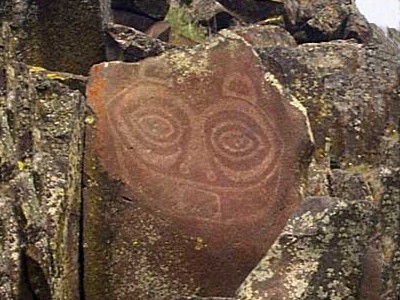
Tsagiglalal saw all this happen, from her rock at the uppermost end of the Chinook-occupied river. Tsagiglalal is a beautiful broad face, with luminous eyes and wide smile, her tongue thrust out, inscribed on rim-rock at the easternmost edge of the Chinook land. Coyote, their myth age trickster-hero, put her there to watch the people. “She Who Watches” they called her. She became a symbol of conscience and of death. “She sees you when you come,” they said, “she sees you when you go.”
What, if anything, did the long persistence and swift collapse of the Chinook mean? They were living so nicely. They had all they wanted and nobody to bother them, were wealthy and respected. Then, because of the skin of a sea mammal and a host of spirits too small to see, thousands of them died, their culture crumbled and the survivors were sent away in a cruel diaspora.
They didn’t sign away their rainy Eden or sell it, they didn’t die in warfare, or move to reservations, not until twenty-five years after the catastrophes that swept most of them away. It wasn’t smallpox that laid them low. Suddenly most them were simply gone. The Wapato Lowlands in particular were empty and silent. Did God call them home? The few survivors walked away dazed. Took to speaking other languages. Were replaced by strangers. After a few decades hardly anyone remembered that they had ever been there.”
This book is meant to remedy that lapse of memory. Naked Against The Rain, Far Shore Press, Portland, OR, 1999.
***
She Who Watches has also been called the stone Owl Woman who watches. Indian women have gone to the stone and knelt before it. They would say something like, “You who watch, please look into me and see my problem and help me to solve it.” A ray of light would come down to shine on the stone face then. After the woman goes to her teepee to sleep a dream would come telling her how to deal with the problem. Maybe that woman would go again to the stone and the ray of light would come down again on the stone, and the next dream would give even more detail as to how to solve the problem.
From: Tahmahnaw, The Bridge of the Gods, by Jim Attwell.
Posted in Uncategorized | Comments Off on She Who Watches — Tsagaglalal ~ By Rick Rubin © 2000
May 23rd, 2011
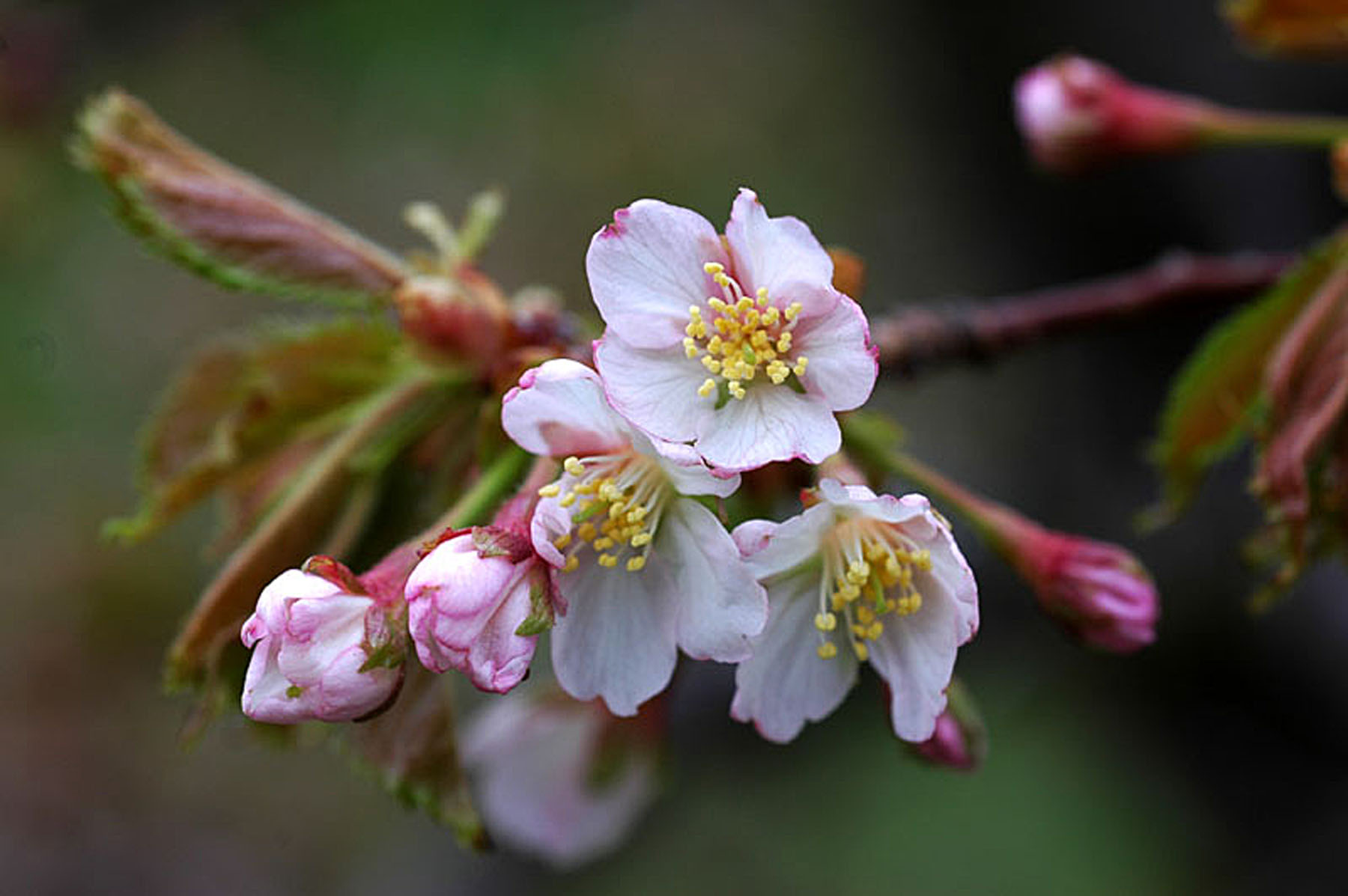
利尻島にも春が来ました。博物館前庭のチシマザクラが開花。でも、肌寒さは相変わらず。冷え込む利尻島の春です。
Spring has finally come to Rishiri-to. The Chishima Cherries have opened in the front garden of the Rishiri Museum, however, the air is cool – as usual. That’s a typical spring in Rishiri.
~photo by Eiji Nishiya
Posted in Uncategorized | Comments Off on Spring Has Finally Come to Rishiri-to
May 23rd, 2011
The annual membership luncheon of the Friends of MacDonald, chaired by Mas Yatabe, was held on May 14, 2011 at the Baked Alaska Restaurant in Astoria, OR. Notable people among the attendees were Consul General of Japan Takamichi Okabe and his wife, Kozue, Dr. Stephen Kohl, author and retired professor of East Asian Languages & Literatures at the University of Oregon and his wife, Katie, and representing the Chinook Nation, Councilman Charles Funk and his wife, Mary. Also in attendance were McAndrew “Mac” burns, Executive Director of Clatsop County Historical Society and his daughter.
The agenda included a State of the Organization and financial report presented by Chairman Mas Yatabe. Also discussed was a plan to distribute Unsung Hero, written by Atsumi McCauley and illustrated by Mariko King. Unsung Hero, a bilingual children’s book about the young adventurer, Ranald MacDonald, is written in both Japanese and English text with full-page, color illustrations. It is the intention of Friends of MacDonald to present gift copies to local Astoria elementary schools as well as to selected elementary schools in the greater Portland/Clark County area. Councilman Charlie Funk brought news that the Chinook Indian Nation, the State of Washington, and the National Park Service are working together to develop a new national park unit. This unit, named “Chinook Middle Village – Station Camp”, and authorized by Congress in 2004, will focus on the first 30 years of the relationship between the Chinook and the United States, a period of time that encompassed the Lewis and Clark Expedition as well as the founding of Astoria, and will most certainly focus on the life and times of Concomly, the principal chief of the Chinook Confederacy and grandfather of Ranald MacDonald.
This new national park unit will be directly adjacent to Fort Columbia State Park and is hoped to be open in 2011.
Alice Yatabe, who developed the website for Friends of MacDonald, discussed the organization’s original mission, reading from a letter written in April 1991 by Donald Sterling, FOM Charter Member, long-time journalist and past-President of the Oregon Historical Society. Yatabe quoted Sterling as calling Ranald MacDonald “the personification of the early contacts between the West and Japan in the mid-19th Century”, and encouraged the Friends to continue to assemble and disseminate information about a wide range of related subjects rather than concentrate only on MacDonald’s own life and adventures. Yatabe pointed out that FOM was currently doing this by re-connecting with the Chinook Nation as well as with Clan McDonald, both in the USA and Scotland – and by FOM’s on-going close relationship with Friends of MacDonald Japan.
As the informal luncheon came to a close those in attendance were treated to a beautiful solo rendition of Chidori No Kyoku performed by Mrs. Kozue Okabe on koto before everyone moved to the MacDonald Birthplace Monument on the corner of 15th and Exchange Streets, the site of the original Ft. Astoria, for a group photo.
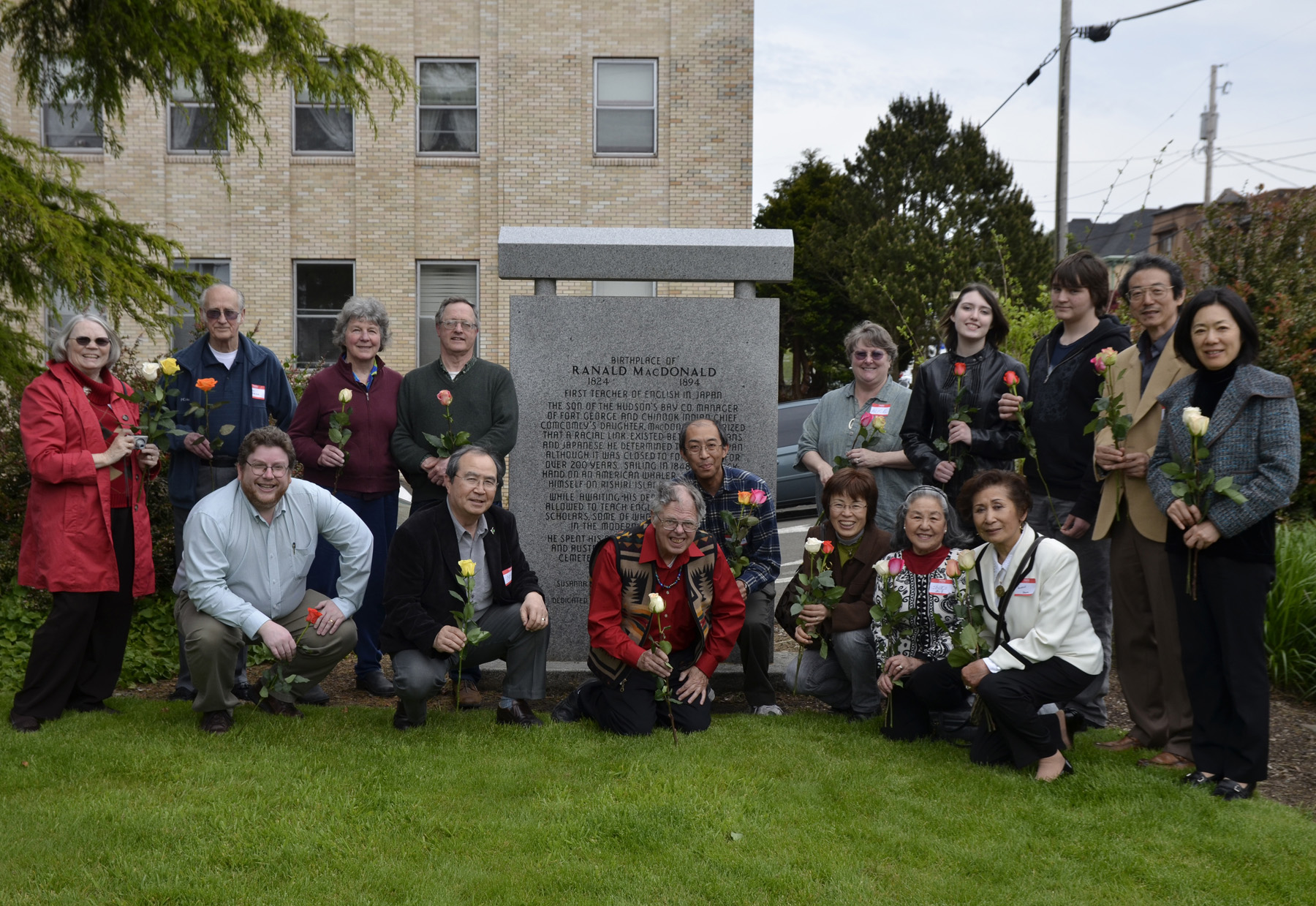
Posted in Uncategorized | Comments Off on FOM Annual Membership Meeting May 2011
March 22nd, 2011
The Oregon Japan Relief Fund has been set up by the organizations listed below to provide financial aid to the Tohoku region in Japan in the wake of the March 2011 earthquake and tsunami. One hundred percent of your contributions will be contributed to Mercy Corps, a 501(c)(3) nonprofit corporation based in old Japantown in Portland that has been helping to alleviate suffering across the globe for 32 years. We hope that you will contribute generously to help those suffering in Japan during this extremely difficult time.
日本で発生しました東北地方太平洋沖地震と津波のための緊急災害募金をオレゴン州でも日本救済支援基金して受け付けております。すべての寄付は全額 Mercy Corpsという団体に渡されます。この団体は32年もの間、ポートランドのジャパンタウンを拠点として救助を支援してきた団体です。この緊急の災害時に 皆様の寛大な寄付をどうぞよろしくお願い致します。
(Some browsers are unable to view the Japanese translation above)
Participating Organizations and Businesses:
Azumano Travel
Beaverton Sister Cities Program
Center for Japanese Studies at PSU
Ikebana International Portland Chapter #47
Japan-America Society of Oregon
Japan Exchange and Teaching Program Alumni Association of Portland (JETAA Portland)
Oregon Nikkei Endowment
Oyanokai
Portland JACL
Portland Japanese Garden
Portland Public Schools
Portland Rose Festival Foundation
Portland-Sapporo Sister City Association
Portland Taiko
Shokookai of Portland
Tokyo International University of America
Willamette University
Wilsonville Chamber of Commerce
For those of you wishing to make a contribution by check, please send your check to:
Mercy Corps
45 SW Ankeny Street
Portland, Oregon 97204
Note: Oregon Japan Relief Fund
Posted in Uncategorized | Comments Off on “From Oregon With Love” . . .
|
 |
|








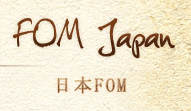
 photo by Eiji Nishiya
photo by Eiji Nishiya
 the endless rain and wind of winter, some large enough to house over a hundred people. Larger villages contained twenty or more longhouses of varying sizes. Inside these comfortable houses, the winter dances, songs and stories were told as the fires cracked and cast their long shadows. Some longhouses were temporarily abandoned for the summer fishing camps; others were occupied year round.
the endless rain and wind of winter, some large enough to house over a hundred people. Larger villages contained twenty or more longhouses of varying sizes. Inside these comfortable houses, the winter dances, songs and stories were told as the fires cracked and cast their long shadows. Some longhouses were temporarily abandoned for the summer fishing camps; others were occupied year round. We were highly acclaimed canoeists, skillfully navigating the treacherous Columbia River and bar to the amazement of the traders and explorers. We plied the coastal waters from California to Alaska in canoes (kaniN) twenty-one to forty-two feet long and larger, carved from a single Red Cedar log and propelled by our distinctly notched, crescent-shaped paddles (isik) of Oregon Ash. It was this skill of travel, which transformed us into a tribe of tremendous wealth and power.
We were highly acclaimed canoeists, skillfully navigating the treacherous Columbia River and bar to the amazement of the traders and explorers. We plied the coastal waters from California to Alaska in canoes (kaniN) twenty-one to forty-two feet long and larger, carved from a single Red Cedar log and propelled by our distinctly notched, crescent-shaped paddles (isik) of Oregon Ash. It was this skill of travel, which transformed us into a tribe of tremendous wealth and power.




 but highly intelligent and comparatively sane. Their numerous villages of fancifully decorated houses lined the shores of the mighty river, from which they drew most of their living and much of their pleasure. That river (we call it the Columbia) was all they ever wanted. It provided them with more than they could use. Fish in profusion swam up the river, which they called Wimah. Five of the six kinds of salmon that swim the Pacific Ocean, sturgeon, smelt, and lamprey came up, each in its season, to offer their succulent flesh to the people. Crabs and oysters in the bays, roots and bulbs in the marshes, deer, bear and elk in the forests and meadows.
but highly intelligent and comparatively sane. Their numerous villages of fancifully decorated houses lined the shores of the mighty river, from which they drew most of their living and much of their pleasure. That river (we call it the Columbia) was all they ever wanted. It provided them with more than they could use. Fish in profusion swam up the river, which they called Wimah. Five of the six kinds of salmon that swim the Pacific Ocean, sturgeon, smelt, and lamprey came up, each in its season, to offer their succulent flesh to the people. Crabs and oysters in the bays, roots and bulbs in the marshes, deer, bear and elk in the forests and meadows. Tsinuk was what the Chehalis, who lived to the north and spoke an entirely different language, called the village or villagers, or some of the river people Chinook, or perhaps Chin people. For though it is probably only a coincidence, the suffix ooks or uks meant plural people in the Chinook language. So it is possible, though unlikely, that the people were really called the Chin, and Chinooks meant more than one Chin person. Of such shadows are names made, when strangers with no common language first meet. Personally, I favor Chin for its simplicity and the feel of it against the roof of my mouth, Tchinn. The language is how I categorized them, and on that account we might call them Chinookans, if the word sounded better to the ear. During their perhaps three or four thousand years of living along the Columbia one language evolved into three or more languages, with relationships about like Dutch to German, or Portuguese to Spanish, and there were dialects and mutually understandable accents, but in all the world, only the people of the river spoke a Chinookan language. Chinook or Chinookans or Chin, they were a singular people, far different from the stereotype “Indians.” They were polite anarchists (in the classic, not the modern sense) with artificially flattened heads and a tendency toward red hair, which they delighted in. They had a highly stratified society with many subtle variations of class. The Chinook had ritualized inter-village or tribal conflict into a maritime battle performance, where few were harmed and gifts were exchanged afterward. They were open to new people and ideas, true cosmopolites, and they loved more than anything to barter. They were good at it, too. The Chinook bettered the canny Scottish fur traders again and again, or so the Scottish fur traders claimed.
Tsinuk was what the Chehalis, who lived to the north and spoke an entirely different language, called the village or villagers, or some of the river people Chinook, or perhaps Chin people. For though it is probably only a coincidence, the suffix ooks or uks meant plural people in the Chinook language. So it is possible, though unlikely, that the people were really called the Chin, and Chinooks meant more than one Chin person. Of such shadows are names made, when strangers with no common language first meet. Personally, I favor Chin for its simplicity and the feel of it against the roof of my mouth, Tchinn. The language is how I categorized them, and on that account we might call them Chinookans, if the word sounded better to the ear. During their perhaps three or four thousand years of living along the Columbia one language evolved into three or more languages, with relationships about like Dutch to German, or Portuguese to Spanish, and there were dialects and mutually understandable accents, but in all the world, only the people of the river spoke a Chinookan language. Chinook or Chinookans or Chin, they were a singular people, far different from the stereotype “Indians.” They were polite anarchists (in the classic, not the modern sense) with artificially flattened heads and a tendency toward red hair, which they delighted in. They had a highly stratified society with many subtle variations of class. The Chinook had ritualized inter-village or tribal conflict into a maritime battle performance, where few were harmed and gifts were exchanged afterward. They were open to new people and ideas, true cosmopolites, and they loved more than anything to barter. They were good at it, too. The Chinook bettered the canny Scottish fur traders again and again, or so the Scottish fur traders claimed.


